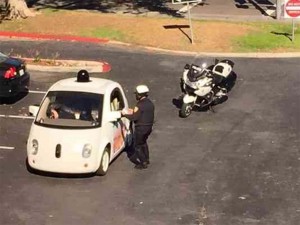As the proponents of autonomous vehicles in Washington D.C. gird themselves for an onslaught of dissension at public hearings later this week, the automakers developing the vehicles continue about the work of improving them.
Google’s just been cleared to run a fleet of self-driving cars in Phoenix, Arizona and the surrounding suburbs while Volvo is preparing a gaggle of as many as 100 vehicles to test in China.
The tech giant has been expanding its test environments in recent months, including adding Austin, Texas, and Kirkland, Washington, to its home base of Mountain View, California. Google is already mapping the Phoenix area in anticipation of the self-driving testing.
“The Phoenix area has distinct desert conditions, which will help us better understand how our sensors and cars handle extreme temperatures and dust in the air,” said Jennifer Haroon, head of business operations for the Google Self-Driving Car project, in a story by Reuters.
(Feds expecting pushback on new autonomous vehicle rules. For more, Click Here.)
The approval comes as Google is trying to determine why one of its test vehicles in recently got into an accident with another vehicle and was deemed to be at fault. Prior to this, the company’s vehicles have been in more than 15 minor collisions, but all were determined to be the fault of the person driving the other vehicle.
Later this week, federal safety regulators will hold public hearings about new federal guidelines for the development of automated vehicles.
NHTSA Administrator Mark Rosekind has suggested that the use of autonomous vehicles could eventually eliminate highway deaths in the U.S., and wants the agency to help promote development of the technology. But there are plenty of skeptics who plan to attend this week’s meeting, including some safety experts who want to slow the process down.
Among those who plan to attend will be former NHTSA Administrator Joan Claybrook, who is president-emeritus of Public Citizen, and Clarence Ditlow, executive director of the Center for Auto Safety. There has been a push for a universal set of guidelines for these companies as more and more are looking for places to test these developmental vehicles.
(Click Here to find out what’s pushing driving costs to a six-year low.)
So far, only a handful of states, including Nevada, Michigan, California and Florida, have actually set down their own rules on self-driving cars. In the meantime, makers are testing outside of the U.S. as well to get a range of environments.
Volvo’s early fleets have handled a variety of testing environments, but the move to put a fleet into service in China – the Swedish/Chinese automaker hasn’t revealed what cities they’re testing in – is a chance to see how self-drivers handle extreme traffic conditions as well as smog.
The automaker is in talks with several cities to secure their approval for the testing as well as ensuring the appropriate regulations and necessary infrastructure is in place. According to Volvo executives, the last two items are the toughest hurdles to clear.
“There are multiple benefits to AD [autonomous driving] cars,” said Volvo CEO Håkan Samuelsson in a statement. “That is why governments need to put in place the legislation to allow AD cars onto the streets as soon as possible. The car industry cannot do it all by itself. We need governmental help.”
(Ford adds active cruise to traction assist to 2017 Fusion. Click Here for the story.)
The automaker has put its vehicles through its self-driving paces in Gothenburg, Sweden, last year, and the next round of testing is unlikely to begin until 2017. However, Volvo is under some pressure to get their vehicles right as executives have publicly stated several times that the automaker expects to have its first fully autonomous vehicles ready for the market in 2020.

